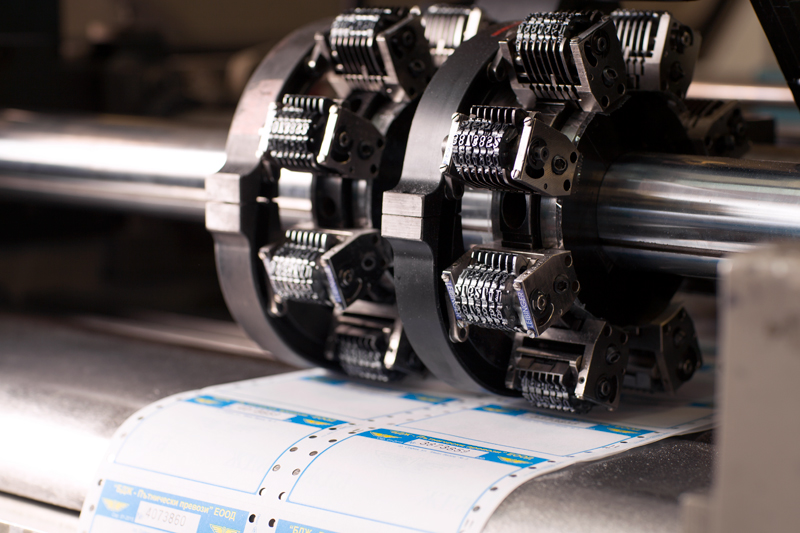The world of anti-counterfeit printing is rapidly evolving as technology advances and counterfeiters become more sophisticated. The need to stay one step ahead is critical. This article will explore the future challenges in anti-counterfeit printing and how the industry can tackle them effectively.

The Growing Threat of Counterfeiting
Counterfeiting is a global issue affecting multiple industries, from pharmaceuticals to fashion. As counterfeiters utilize advanced technologies, the challenge for authentic brands is to protect their products and maintain consumer trust. The battle against counterfeiting is not just about maintaining brand integrity but also about ensuring customer safety.
Advancements in Printing Technology
With the evolution of printing technology, new methods are being developed to combat counterfeit products. These include holographic images, secure QR codes, and specialized inks. However, each advancement presents its own set of challenges, such as increased costs and the need for specialized equipment.
Holograms and Special Inks
Holograms have long been a staple in anti-counterfeit measures, but as their use becomes more widespread, counterfeiters are finding ways to replicate them. Similarly, special inks that change color or glow under UV light are effective, but they can be expensive and require specific conditions to verify.
Integration with Digital Solutions
The integration of digital solutions with physical printing is becoming increasingly important. Technologies like blockchain can provide a digital ledger that tracks the authenticity of a product through its lifecycle. This integration can enhance security but also brings challenges related to data management and privacy concerns.
Blockchain and Track-and-Trace Systems
Blockchain offers transparency and security by maintaining an immutable record of transactions. When combined with track-and-trace systems, it allows businesses to monitor products from production to sale. However, the implementation of these systems can be complex and requires collaboration across the supply chain.
Cost and Accessibility
Another significant challenge is the cost of implementing anti-counterfeit printing solutions. Businesses, especially small enterprises, may find it difficult to afford these technologies. Accessibility to affordable solutions is crucial for widespread adoption.
Regulatory Challenges
Regulations play a crucial role in combating counterfeiting. Businesses must navigate various regulatory environments, which can be complex and vary significantly from region to region. Ensuring compliance while implementing anti-counterfeit measures is an ongoing challenge.
Pharmaceutical Serialization
The pharmaceutical industry faces strict regulations regarding serialization. This involves assigning unique identifiers to each product, which can be tracked and verified. Serialization is effective but requires significant investment in technology and infrastructure.
The Role of Consumer Awareness
Educating consumers about the importance of buying authentic products is another challenge. Many consumers are unaware of the risks associated with counterfeit goods. Increasing awareness can help reduce demand for fake products and support the efforts of legitimate businesses.
Future Trends in Anti-Counterfeit Printing
Looking ahead, the industry is likely to see more collaboration between businesses and technology providers. Innovations such as AI and machine learning could play a role in detecting and preventing counterfeiting. These technologies can analyze patterns and identify potential threats more swiftly.
AI and Machine Learning
AI can help identify suspicious activities by analyzing data more efficiently than humans. Machine learning algorithms can learn from past data to predict and identify counterfeit patterns, providing proactive solutions to potential threats.
Conclusion
The future of anti-counterfeit printing is both challenging and promising. By embracing new technologies and fostering collaboration, the industry can develop effective strategies to combat counterfeiting. While the challenges are significant, the path forward is clear innovation, regulation, and consumer education are key to staying ahead of counterfeiters.

FAQs
What are the biggest threats to anti-counterfeit printing?
The biggest threats include advancements in counterfeiting technology, high implementation costs, and regulatory hurdles.
How can digital solutions enhance anti-counterfeit measures?
Digital solutions like blockchain provide secure, transparent records that enhance product authenticity and traceability.
Why is consumer awareness important in combating counterfeiting?
Consumer awareness reduces demand for counterfeit goods and supports legitimate businesses by encouraging the purchase of authentic products.
For more information on security printing and how it can protect your business, visit Lithotech.
Explore security printing examples at Full Color Printing Firm to see how businesses are leveraging these technologies effectively.
Learn more about anti-counterfeit printing in e-commerce to understand its role in the digital marketplace.
This article contains affiliate links. We may earn a commission at no extra cost to you.







